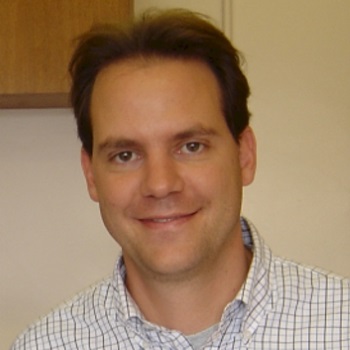Links to external sources may no longer work as intended. The content may not represent the latest thinking in this area or the Society’s current position on the topic.
Self-assembled peptides: from nanostructure to bioactivity

Theo Murphy international scientific discussion meeting organised by Professor Ian Hamley, Professor Dek Woolfson, Professor Louise Serpell, Dr Alberto Saiani and Professor Raffaele Mezzenga.
This meeting discussed exciting emerging themes in understanding and controlling the self-assembly of peptides to create unique nanostructures, and to enable targeted and enhanced bioactivity from the presentation of the peptide motifs. It covered several classes of self-assembling peptides and related molecules including amyloid peptides, lipopeptides and coiled coil peptides.
"This meeting presents an unparalleled opportunity for conferees to discuss peptide self-assembly with world leaders in the field in an open and intimate format and the superb setting of the Royal Society's Chicheley Hall" Professor Dek Woolfson
Attending the event
This meeting has taken place.
Recorded audio of the presentations are available for each talk below. Meeting papers will be published in a future issue of Interface Focus.
For further information please contact the scientific programmes team.
Organisers
Schedule
Chair

Professor Ian Hamley, University of Reading, UK

Professor Ian Hamley, University of Reading, UK
I obtained my BSc in Chemical Physics from the University of Reading in 1997, and was awarded a PhD in Chemistry from the University of Southampton in 1991. I then took up a Royal Society William and Mary postdoctoral fellowship at FOM-AMOLF, Amsterdam, The Netherlands (1991-2) then a postdoctoral fellowship at the University of Minnesota (1992-3). I returned to a lectureship in Physics at the University of Durham in 1993. I moved to the University of Leeds as a lecturer in physical chemistry in 1995 and worked my way up to a Professorship in 2004 where I took on the directorship of the Centre for Self-Organizing Molecular Systems. In 2004 I was awarded a Leverhulme Research Fellowship and a Visiting Fellowship at the SRS, Daresbury, Laboratory to undertake synchrotron x-ray scattering studies of polymeric materials. In 2005 I moved to the University of Reading to take up the Diamond Professorship in conjunction with Diamond Light Source (to 2010) In 2009 I was awarded an International Visiting Research Fellowship at University of Sydney, Australia In 2011, I was awarded a Royal Society-Leverhulme Research Merit Award. My early work focussed on the self-assembly of block copolymers but in the last ten years I have changed direction and now my group’s activities mainly concern the self-assembly of peptides, lipopeptides and polymer-peptide conjugates and their bioactivity. I have more than 350 publications (h-index 55).
| 09:05 - 09:45 |
Designer self-assembling peptides:nanofibers, nanotubes and dynamic behaviours
Short peptides that are made of natural amino acids were never seriously considered as useful materials 25 years ago. However, the discovery of a class of self-assembling peptides in yeast that spontaneously undergo self-organization into well-ordered structures resulted in a conceptual change. Since then diverse classes of short peptides have been invented with broad applications including 3D tissue cell culture, reparative and regenerative medicine, tissue engineering, slow and sustained drug release, stabilization of membrane proteins for develop nanobiotechnology and molecular devices. Molecular design using short peptides as new materials will likely play increasingly important role in nanoscience, nanotechnology, nanobiotechnology and nanomedicine. 
Professor Shuguang Zhang, Center for Bits and Atoms, MIT, USA

Professor Shuguang Zhang, Center for Bits and Atoms, MIT, USAShuguang Zhang is at the Center for Bits & Atoms, Massachusetts Institute of Technology. He received his B.S from Sichuan University, China and Ph.D. in Biochemistry & Molecular Biology from the University of California at Santa Barbara, USA. He was an American Cancer Society Postdoctoral Fellow and a Whitaker Foundation Investigator at MIT. He was a 2003 Fellow of Japan Society for Promotion of Science (JSPS fellow). His work on designer self-assembling peptide scaffolds won 2004 R&D 100 award. He and his colleagues’ work in direct harvesting of biosolar energy was selected as one of the 10 finalists of the 2005 Saatchi & Saatchi Award for World Changing Ideas. He won 2006 Wilhelm Exner Medal of Austria. He is a Fellow of the American Institute of Medical and Biological Engineering and Fellow of US National Academy of Inventors. He is a Foreign Corresponding Member of Austrian Academy of Sciences. He has published >160 scientific papers, cited over 21,000 times, with an h-index of 70. He is also a co-founder and board member of Molecular Frontiers Foundation which encourages young people to ask big and good questions in order to win the Molecular Frontiers Inquiry Prize. |
|
|---|---|---|
| 09:45 - 10:25 |
The diversity and utility of amyloid fibrils
Amyloidogenic peptides are well known for their involvement in diseases such as Diabetes type 2 and Alzheimer’s disease. However, more recently, amyloid fibrils have been shown to provide scaffolding and protection as functional materials in a range of organisms from bacteria to humans. These roles highlight the incredible tensile strength of the cross-beta amyloid architecture. Many sequences are able to self-assemble to form amyloid with a cross-beta core and the group have explored the contribution of the amino-acid side chains to amyloidogenicity and the amyloid architecture using X-ray fibre diffraction and electron microscopy. The group have described a 12mer peptide that forms fibrous crystals, a seven residue peptide originating from alpha-synuclein that has the ability to form nanotubes and a range of penta- and hexapeptides forming different morphologies. This work provides a wide range of peptides that may be exploited as fibrous bionanomaterials. These fibrils provide a scaffold upon which functional groups may be added, or templated assembly may be performed. This talk will present recent work on developing fluorescent nanotubes, silica-nanowires and peptide catalysts. 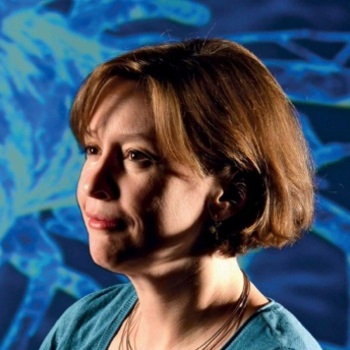
Professor Louise Serpell, University of Sussex, UK

Professor Louise Serpell, University of Sussex, UKProfessor Louise Serpell was awarded a DPhil from University of Oxford, working on the structure of amyloid fibrils and then took up a postdoctoral research position in Canada at the Tanz Neuroscience building in Toronto. She returned to the UK to the Neurobiology division in the Laboratory of Molecular Biology in Cambridge in 1997 and started her own research programme. Her work aimed to elucidate the structure of amyloid fibrils and continued when she was awarded a Wellcome Trust Career development fellowship held at the University of Cambridge. In 2003 she moved to University of Sussex and since then has run a research group that combines research to explore the potential uses of amyloid fibrils for nanobiotechnology with the mechanisms and causes for Alzheimer's disease. The Serpell research group spans structural biology to cell biology and neuroscience with a particular focus on self-assembling peptides and how they are able to form amyloid fibrils that are either pathological (in disease) or play a functional role. Recent work has explored the potential morphologies that can be accessed by the amyloid cross-beta structure and how amyloid fibrils may be exploited as nanowires and scaffolds. Louise is Joint director of the Dementia Research group at the University of Sussex. |
|
| 10:25 - 10:40 | Coffee/Tea | |
| 10:40 - 11:20 |
Localising structure with peptides and peptoids
The group present recent results using peptidomimetic molecules to define the spatial arrangements of chemical groups and nanostructures on material surfaces, as steps towards the mimicry of natural biointerfaces and their function. In a first example, the juxtaposition on the molecular scale of chemical groups is defined using the primary sequence of peptidomimetic poly(N-substituted glycine) “peptoids”. By modifying the spatial separation between oppositely charged chemical groups and their sequence order, the electrostatic interaction between proteins and a peptoid-coated surface can be controlled. In a second example, proteases are coated on a surface to enable the reverse hydrolysis of peptide molecular gelator precursors. By tuning the conditions of the surface preparation, self-assembled peptide nanofibers may be observed in the bulk solution or preferentially localized on the surface. The peptidomimetic systems presented are convenient for incorporating biochemical functionality and for organizing these groups on both the molecular and nanostructural length-scales. The localization of enzymatic activity especially augurs well for generating dynamic and adaptive biointerfaces. 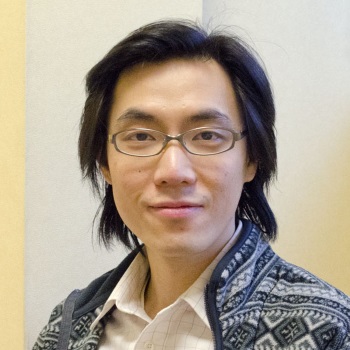
Dr K. H. Aaron Lau, University of Strathclyde, Glasgow, UK

Dr K. H. Aaron Lau, University of Strathclyde, Glasgow, UKDr. King Hang Aaron Lau joined the Department of Pure and Applied Chemsitry at the University of Strathclyde as lecturer (assistant professor) in 2013, and is a member of the university’s bionanotechnology initiative. Aaron earned his Sc.M. in materials science and engineering at Brown University and his Ph.D. in chemistry at the Max Planck Institute for Polymer Research. He was then a postdoctoral fellow in biomedical engineering at Northwestern University (USA), during which he received a US NIH National Research Service Award. Aaron's research in bioinspired interfacial materials focuses on convenient material systems that can exert molecular-level control in protein and cell systems. Current projects explore peptidomimetic polymers as novel biointerfaces and nanopores for controlling protein transport. Aaron was also recently a Royal Society of Chemistry mobility fellow and a Scottish Cruciblist (2015). |
|
| 11:20 - 12:00 |
Engineering Peptide Display for Self-assembly and Interactions with Cells
The possibility of displaying biomolecular functionalities (e.g. small peptide molecules) with spatiotemporal control for triggering macromolecular (e.g. polysacharides, enzymes or cell surface receptors) recognition events is an important goal in biomaterials engineering. Progress in this area will enable the design of defined substrates for cell culture studies in 2- or 3-D or the development of smart drug delivery carriers. This talk will present our recent efforts on peptide engineering to trigger their self-assembly into self-supporting gels and micellar nanocarriers or onto surfaces. 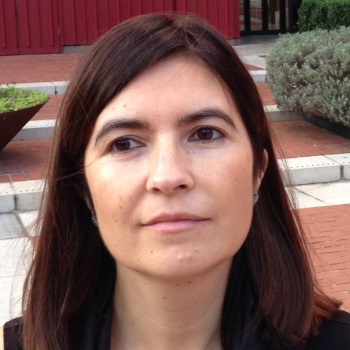
Dr Helena Azevedo, Queen Mary University of London, UK

Dr Helena Azevedo, Queen Mary University of London, UKDr Helena S. Azevedo obtained a MEng degree in Biological Engineering from the University of Minho (Portugal) and her PhD from De Montfort University (UK). She completed post-doctoral work with Prof. Reis at the 3B’s Research Group at the University of Minho working on biomaterials for applications in drug delivery and tissue engineering. Before becoming an independent researcher at the University of Minho, she was a Marie Curie fellow in Chicago with Prof. Stupp at Northwestern University where she developed work on self-assembling biomaterials using peptide amphiphiles. Currently, she is a Senior Lecturer in Biomedical Engineering & Biomaterials in the School of Engineering & Materials Science at Queen Mary University of London (QMUL) and the Director of Operations of the Institute of Bioengineering also at QMUL. Her research interests include the use of peptides as instructive building blocks for constructing complexity and functionality in biomaterials. |
|
| 12:00 - 12:40 |
Drug Delivery via Cell Membrane Fusion using Lipopeptide Modified Liposomes
Efficient delivery of drugs to living cells is still a major challenge. Currently, most methods rely on the endocytotic pathway resulting in low delivery efficiency due to limited endosomal escape and/or degradation in lysosomes. Here, we report a new method for direct drug delivery into the cytosol of live cells in vitro and vivo utilizing targeted membrane fusion between liposomes and live cells. A pair of complementary coiled coil lipopeptides was embedded in the lipid bilayer of liposomes and cell membranes respectively, resulting in targeted membrane fusion with concomitant release of liposome encapsulated cargo including fluorescent dyes and the cytotoxic drug doxorubicin. Using a wide spectrum of endocytosis inhibitors and endosome trackers we demonstrate that the major site of cargo release is at the plasma membrane. This method thus allows for the quick and efficient delivery of drugs and is expected to have many in-vitro, ex-vivo and in-vivo applications. 
Professor Alexander Kros, Leiden Institute of Chemistry, Netherlands

Professor Alexander Kros, Leiden Institute of Chemistry, NetherlandsAlexander Kros, born 1969 in the Netherlands, studied chemistry at Radboud University in Nijmegen , the Netherlands from 1992 to 1995. He graduated from Prof. Roeland Nolte’s group in 2000 in the field of conducting polymeric nanotubes for glucose biosensors. After postdoctoral studies at Caltech with Professor David Tirrell, he joined Leiden University as an assistant professor in 2002. After studying self-assembled monolayers of lipidated peptides for some years he initiated research in membrane fusion and was appointed to associate professor in 2009. In 2014 he became the head of the department of Supramolecular & Biomaterials Chemistry at Leiden University, which was funded by a major grant from the European Research Council and a VICI grant from the Netherlands Organisation for Scientific Research. In April 2016, he was promoted to the rank of full professor in Supramolecular & Biomaterials Chemistry. He has published around 110 research papers, has a H-factor of 30 and has received multiple (inter)national grants for his research. The purpose of his research is to explore fundamental aspects of peptide assembly as a programmable tool for inducing targeted membrane fusion in an in vivo environment and to design functional vaccines. Other research interests include cell-cell communication and targeted drug delivery. |
|
| 12:40 - 13:40 | Lunch |
Chair

Professor Louise Serpell, University of Sussex, UK

Professor Louise Serpell, University of Sussex, UK
Professor Louise Serpell was awarded a DPhil from University of Oxford, working on the structure of amyloid fibrils and then took up a postdoctoral research position in Canada at the Tanz Neuroscience building in Toronto. She returned to the UK to the Neurobiology division in the Laboratory of Molecular Biology in Cambridge in 1997 and started her own research programme. Her work aimed to elucidate the structure of amyloid fibrils and continued when she was awarded a Wellcome Trust Career development fellowship held at the University of Cambridge. In 2003 she moved to University of Sussex and since then has run a research group that combines research to explore the potential uses of amyloid fibrils for nanobiotechnology with the mechanisms and causes for Alzheimer's disease.
The Serpell research group spans structural biology to cell biology and neuroscience with a particular focus on self-assembling peptides and how they are able to form amyloid fibrils that are either pathological (in disease) or play a functional role. Recent work has explored the potential morphologies that can be accessed by the amyloid cross-beta structure and how amyloid fibrils may be exploited as nanowires and scaffolds. Louise is Joint director of the Dementia Research group at the University of Sussex.
| 13:40 - 14:20 |
Self-assembly and immunity

Professor Gerard Wong, Bioengineering Department, Chemistry & Biochemistry Department, CNSI, UCLA, USA

Professor Gerard Wong, Bioengineering Department, Chemistry & Biochemistry Department, CNSI, UCLA, USAGerard Wong is a Professor in the Department of Bioengineering, Department of Chemistry, and the California NanoSystems Institute at UCLA. Wong received his BS and PhD at Caltech physics and Berkeley physics respectively. He joined the Materials Science & Engineering Dept and Physics Dept at the University of Illinois at Urbana-Champaign in 2000 and moved to UCLA in 2009. His awards include a Beckman Young Investigator Award, an Alfred P Sloan Fellowship, and two Xerox Faculty Research Awards. He is a Fellow of the American Physical Society (2011), and a Fellow of the American Academy of Microbiology (2016). His current research interests include bacterial biofilms, innate immunity, and antibiotic design. |
|
|---|---|---|
| 14:20 - 15:00 |
Peptide Conjugates: From Self-Assembly to Bioactivity
Self-assembling peptides and their conjugates offer exceptional potential in nanomedicine. This talk will present some of the group's recent work on nanoscale assembled peptides and their conjugates, focussing on lipopeptides. Examples from recent work on self-assembling lipopeptides (peptides attached N- terminally to palmitoyl, hexadecyl, lipid chains) will be outlined. The group's focus is to investigate potential relationships between self-assembly and bioactivity, in particular in the fields of regenerative medicine, antimicrobial systems, and immune therapies. 
Professor Ian Hamley, University of Reading, UK

Professor Ian Hamley, University of Reading, UKI obtained my BSc in Chemical Physics from the University of Reading in 1997, and was awarded a PhD in Chemistry from the University of Southampton in 1991. I then took up a Royal Society William and Mary postdoctoral fellowship at FOM-AMOLF, Amsterdam, The Netherlands (1991-2) then a postdoctoral fellowship at the University of Minnesota (1992-3). I returned to a lectureship in Physics at the University of Durham in 1993. I moved to the University of Leeds as a lecturer in physical chemistry in 1995 and worked my way up to a Professorship in 2004 where I took on the directorship of the Centre for Self-Organizing Molecular Systems. In 2004 I was awarded a Leverhulme Research Fellowship and a Visiting Fellowship at the SRS, Daresbury, Laboratory to undertake synchrotron x-ray scattering studies of polymeric materials. In 2005 I moved to the University of Reading to take up the Diamond Professorship in conjunction with Diamond Light Source (to 2010) In 2009 I was awarded an International Visiting Research Fellowship at University of Sydney, Australia In 2011, I was awarded a Royal Society-Leverhulme Research Merit Award. My early work focussed on the self-assembly of block copolymers but in the last ten years I have changed direction and now my group’s activities mainly concern the self-assembly of peptides, lipopeptides and polymer-peptide conjugates and their bioactivity. I have more than 350 publications (h-index 55). |
|
| 15:00 - 15:30 | Coffee/Tea | |
| 15:30 - 16:10 |
The Effect of Glycation on the Triple Helix Forming Properties of Collagen Model Peptides
Advanced glycation endproducts (AGEs) are a family of unnatural amino acids that result from non-enzymatic reactions between reducing sugars and amino acid side-chains in proteins. These post-translational modifications mainly involve reactions at lysine and arginine residues and give rise to a large number of structurally diverse compounds ranging from simple alkylation to more complex heterocycles and cross-linked structures. The formation and accumulation of AGEs in the body is thought to play a significant role in the pathogenesis of many debilitating diseases including diabetes and age-related neurodegenerative diseases, such as Alzheimer’s disease. The precise molecular mechanisms by which AGEs influence the progression of these diseases are not clear, and there remains a need to develop new chemical tools to investigate them. Collagen is the most abundant protein in vertebrates and its long-lived nature makes it susceptible to AGE formation. Collagen is therefore the most relevant protein to study when investigating AGEs. The synthesis of several AGE-modified amino acid building blocks and their site-specific incorporation into collagen model peptide (CMP) sequences using SPPS is described. The AGE-CMPs were shown to form triple helices in solution demonstrating their potential as models for investigating AGE-modified collagens. Cross-linking of proteins by AGEs causes a host of pathological conditions but their exact roles are unknown. Cross-linking lysyl AGEs were also synthesized and incorporated into two types of collagen peptides. The utility of these cross-linked peptides for biochemical investigations was demonstrated by proteolysis studies and circular dichroism. 
Professor Margaret Brimble, University of Auckland, New Zealand

Professor Margaret Brimble, University of Auckland, New ZealandMargaret Brimble is the Director of Medicinal Chemistry and a Distinguished Professor at the University of Auckland where her research program focuses on the synthesis of bioactive natural products, antimicrobial peptides, self-assembling peptides and peptidomimetics. She has published >400 papers, 50 reviews, holds 30 patents, won the 2012 RSNZ Rutherford Medal, the 2010 RSC Natural Products Award, the 2007 L’Oreal-UNESCO Women in Science laureate in Materials Science for Asia-Pacific, a 2015 IUPAC Distinguished Women in Chemistry/Chemical Engineering Award and conferred the Queen’s Honour CNZM. She is President of IUPAC Organic and Biomolecular Division III, Chair of the Rutherford Foundation RSNZ, an Associate Editor for Organic and Biomolecular Chemistry and Past-President of the International Society of Heterocyclic Chemistry. |
|
| 16:10 - 16:50 |
Rational Hydrogel Design Enabled by Structural Insight into Hydrogelation of Self-Assembled Materials
The self-assembly of peptides and proteins into cross-amyloid structures is a defining characteristic of amyloid pathologies, including Alzheimer’s disease, Parkinson’s disease, type 2 diabetes and prion encephalopathies. Amyloid protein assemblies also exist as evolutionarily conserved motifs with defined biological function. There is growing interest in exploiting self-assembled peptides in the development of novel functional structures with applications in biomedicine, energy, and materials. Self-assembled peptides that form emergent hydrogel networks have been of special significance for applications in tissue engineering and regenerative medicine. Herein, efforts to bridge the gap between empiricism and rational design in the development of self-assembled hydrogels derived from functionalized amino acids will be discussed. Studies focused on understanding the self-assembly mechanisms and the packing structure of functionalized phenylalanine assemblies have provided insight that enables the use of these agents to create functional supramolecular hydrogels. These low molecular weight hydrogels possess properties similar to those exhibited by materials derived from more expensive peptide-based systems. 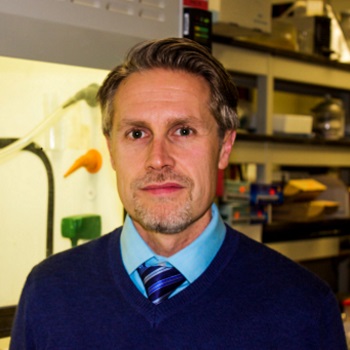
Professor Bradley Nilsson, University of Rochester, USA

Professor Bradley Nilsson, University of Rochester, USABradley Nilsson completed his PhD studies in chemistry at the University of Wisconsin–Madison with Professor Ronald T. Raines in 2003. He then conducted postdoctoral research in the area of synthetic organic chemistry with Professor Larry E. Overman at the University of California, Irvine. In 2006, he joined the faculty of the Department of Chemistry at the University of Rochester. The Nilsson group is focused on understanding the noncovalent interactions that drive molecular recognition and self-assembly in amyloid proteins and on exploiting these interactions to develop amyloid-based materials and therapeutics. |
|
| 16:50 - 17:30 |
Directed discovery of peptide nanostructures
It is the group’s aim to develop functional nanostructures that mimic the ability of living systems to sense, adapt, convert energy and respond to new situations but are drastically simplified, robust and functional. The design and selection of suitable self-assembling sequences is, however, challenging due to the vast combinatorial space available. This talk will report on directed discovery methodology that allows the peptide sequence space to be searched for self-assembling structures using computation and experiment. An additional challenge in mimicry of living materials is that they actively (rather than passively) respond to new situations. This talk will report on the progress of developing such non-equilibrium nanostructures. A number of examples of functional bio-inspired nanostructures will be discussed with applications in design of responsive biomaterials and tunable emulsifiers. 
Professor Rein V. Ulijn, CUNY Advanced Science Research Center, USA

Professor Rein V. Ulijn, CUNY Advanced Science Research Center, USARein Ulijn is founding Director of the Nanoscience Initiative at the Advanced Science Research Center at CUNY, New York. His research is focused on peptide nanotechnology. Awards and fellowships include ERC Consolidator Grant, RSC Norman Heatley Medal (2013), Royal Society Merit Award (2014) and Fellowship of the Royal Society of Edinburgh. He authored 140 research articles and given over 120 invited lectures. He received an MSc in Biotechnology from the University of Wageningen, PhD in Physical Chemistry from the University of Strathclyde and postdoctoral training from the University of Edinburgh. During 2003-2008 he was in the School of Materials, University of Manchester. |
Chair

Professor Dek Woolfson, University of Bristol, UK

Professor Dek Woolfson, University of Bristol, UK
Professor Dek Woolfson took his first degree in Chemistry at the University of Oxford, UK. He then did a PhD at the University of Cambridge followed by post-doctoral research at University College London and the University of California, Berkeley. After 10 years as Lecturer through to Professor of Biochemistry at the University of Sussex, he moved to the University of Bristol in 2005 to take up a joint chair in Chemistry and Biochemistry.
Dek’s research has always been at the interface between chemistry and biology, applying chemical methods and principles to understand biological phenomena. Specifically, his group is interested in the challenge of rational protein design, and how this can be applied in synthetic biology and biotechnology. His particular emphasis is on making completely new protein structures and biomaterials for applications in cell biology and medicine.
In 2011, Dek became the first recipient of the Medimmune Protein and Peptide Science Award of the Royal Society of Chemistry; and in 2014 he received a Royal Society Wolfson Research Merit Award. Dek is Director of the Bristol BioDesign Institute and Co-Director of BrisSynBio, a £13.6M BBSRC/EPSRC-funded Synthetic Biology Research Centre.
| 09:00 - 09:40 |
Autoimmunity and neurodegeneration: the mimicry pathway from aberrant N-glucosylated peptides to specific protein antigens
In autoimmune diseases, it has been proposed that exogenous "molecular triggers", i.e., specific non-self-antigens accompanying infectious agents, may disrupt the control of adaptive immune system resulting in serious pathologies. The aetiology of multiple sclerosis (MS) remains unclear. However, epidemiologic data suggest that exposure to infectious agents may be associated with increased MS risk and that progression may be linked to exogenous, bacterially-derived, antigenic molecules mimicking mammalian cell surface glycoconjugates triggering autoimmune responses. Previously, antibodies specific to a gluco-asparagine (N-Glc) glycopeptide, CSF114(N-Glc), were identified in sera of an MS patient subpopulation. Since the human glycoproteome repertoire lacks this uniquely modified amino acid, the group turned its attention to bacteria, i.e., Haemophilus influenzae, expressing cell-surface adhesins including N-Glc, to establish connection between H. influenzae infection and MS. The group exploited the biosynthetic machinery from H. influenzae opportunistic pathogens (and the homologous enzymes from A. pleuropneumoniae) to produce a unique set of defined glucosylated adhesin proteins. Interestingly it revealed that a hyperglucosylated protein domain, based on the cell-surface adhesin HMW1A, is preferentially recognized by antibodies from sera of an MS patient subpopulation. In conclusion the hyperglucosylated adhesin is the first example of an N-glucosylated native antigen that can be considered a relevant candidate for triggering pathogenic antibodies in MS. 
Professor Anna Maria Papini, PeptLab, University of Florence and University of Cergy Pontoise

Professor Anna Maria Papini, PeptLab, University of Florence and University of Cergy PontoiseAnna Maria Papini obtained an International PhD in Chemical Biology (1991) supervised by Prof. Luis Moroder, Max-Planck Institut for Biochemistry. She is Professor of Bioorganic Chemistry of Italian and French universities and Laureate “Chaire d’Excellence” from French ANR (2009-2014). She is coordinator of French-Italian Laboratory of Peptide & Protein Chemistry & Biology (www.peptlab.eu) associating Departments of Chemistry, Neurosciences & Pharmaceutical Sciences of Florence University and Chemical Biology Laboratory of Cergy-Pontoise University. Since 2013 she is delegate of International Affairs of School of Science at Florence University. Her research activity has been always aimed to translational research. In recognition of her outstanding contribution to peptide science in 2008 she was the recipient of Zervas Award and 1st Theodoropoulos Award. With P. Dawson she co-chaired 2016 GRC on Peptide Chemistry and Biology. She founded 1st spin-off of Florence University EspiKem (2003) and start up Toscana Biomarkers (2007) for R&D of peptide-based diagnostics of autoimmune diseases. For these activities in 2009 she got Frost & Sullivan Excellence in Research Award & Vespucci Award from Regione Toscana. |
|
|---|---|---|
| 09:40 - 10:20 |
Design of Structurally Defined 1D and 2D assemblies.
Structurally defined materials on the nanometer length-scale have been historically the most challenging to rationally construct and the most difficult to structurally analyze. Sequence-specific biomolecules, i.e., proteins and nucleic acids, have advantages as design elements for construction of these types of nano-scale materials in that correlations can be drawn between sequence and higher order structure, potentially affording ordered assemblies in which functional properties can be controlled through the progression of structural hierarchy encoded at the molecular level. However, the predictable design of self-assembled structures requires precise structural control of the interfaces between peptide subunits (protomers). In contrast to the robustness of protein tertiary structure, quaternary structure has been postulated to be labile with respect to mutagenesis of residues located at the protein-protein interface. We have employed simple self-assembling peptide systems to interrogate the concept of designability of interfaces within the structural context of nanotubes and nanosheets. These peptide systems provide a framework for understanding how minor sequence changes in evolution can translate into very large changes in supramolecular structure, which provides significant evidence that the designability of protein interfaces is a critical consideration for control of supramolecular structure in self-assembling systems. 
Professor Vincent Conticello, Emory University, Atlanta, GA USA

Professor Vincent Conticello, Emory University, Atlanta, GA USAVincent P. Conticello is a Full Professor in the Department of Chemistry at Emory University. He received his doctoral degree from Northwestern University, and, after post-doctoral stints at the California Institute of Technology and the University of Massachusetts, he joined the faculty of Emory University in 1995. His research interests lie in the design, synthesis, and characterization of synthetic materials derived from self-assembly of sequence-specific proteins and peptides. His most recent research has focused on extending designability concepts from protein science toward the creation of structurally defined one-dimensional and two-dimensional nanostructures. |
|
| 10:20 - 10:45 | Coffee/Tea | |
| 10:45 - 11:25 |
Dehydropeptide hydrogelators as new potential drug nanocarriers
Hydrogels made of small peptides, especially di- and tripeptides, are particularly attractive owing to simple synthetic procedures, chemical variability, and potential for introduction biological functionality. The gelation of this type of peptides is usually driven by the cooperative effect of several weak intermolecular interactions such as hydrogen bonding, hydrophobic and aromatic-interactions. The main limitation of peptide hydrogels for biomedical applications is their susceptibility to enzymatic hydrolysis. A well established strategy to provide peptides and proteins with proteolytic stability is the replacement of natural amino acids by non-proteinogenic analogues such as D-amino acids, ß-amino acids or dehydroamino acids. Small peptides with dehydroamino acids residues and N-capped with bulky aromatic moieties constitute an important class of hydrogelators that resists proteolysis. The dehydropeptides building blocks can be easily obtained from the corresponding peptides with β-hydroxyamino acid residues and give hydrogels at low critical gelation concentrations. Molecular dynamic simulations showed that the conformational constraints imposed by the dehydroamino acid residues are beneficial to the peptide self-assembly process into supramolecular structures. Preliminary studies using photophysical methods showed that these materials can be used as efficient nanocarriers of several antitumoral drugs. Hydrogels obtained from small dehydropeptides can be considered as novel nano-pharmaceuticals since they ally proteolytic stability to potential intrinsic biological activity and drug delivery capability. 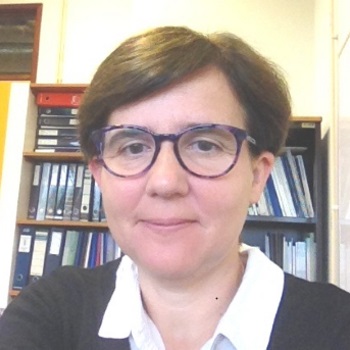
Professor Paula Margarida Ferreira, University of Minho, Portugal

Professor Paula Margarida Ferreira, University of Minho, PortugalPaula Margarida Vidigal Soares Teixeira Ferreira is associate professor at the Chemistry Department of University of Minho and a senior researcher in the Chemistry Center of University of Minho. She received her MSc in Pharmaceutical Sciences from the University of Coimbra and her PhD in Chemistry from the University of Minho. Her current research is focused on the development of new methodologies for the synthesis of non-proteinogenic amino acid derivatives and their application as fluorescent markers, conformational probes and new materials for biomedical applications. |
|
| 11:25 - 12:05 |
Heterotypic supramolecular assemblies of short peptidic derivatives
Supramolecular hydrogels, formed via intermolecular interactions in water, are emerging as a new type of versatile soft materials to be applied in many areas, such as biomedical applications, catalysis, food additives, and cosmetics. While most of the supramolecular hydrogels are homotypic (i.e., one type of building blocks), heterotypic supramolecular hydrogels are less explored, but may offer unique advantages. This talk discuss supramolecular hydrogels that consist of more than one type building blocks (i.e., heterotypic) to illustrate the promises and challenges of heterotypic supramolecular hydrogels as soft biomaterials. First, we discuss the driving force for producing heterotypic supramolecular hydrogels. Second, we introduce the general methods for triggering heterotypic supramolecular hydrogels. Third, we report an example of two complementary pentapeptides from a beta-sheet motif of a protein self-assemble to form beta-sheet like structures upon being mixed in water. Although beta-sheet is a common secondary structure formed by certain segments of peptides in proteins, the isolated segments by themselves usually are unable to maintain the original secondary structures due to the lack of the conformation restriction provided by the proteins. By promoting the pentapeptides transform from alpha-helix to beta-sheet conformation, the self-assembly results in supramolecular hydrogels. This talk will illustrate a bioinspired way to generate supramolecular peptide nanofibers, a class of bioactive entities, with predefined secondary structures by a rational design that uses protein structures as the blueprint. 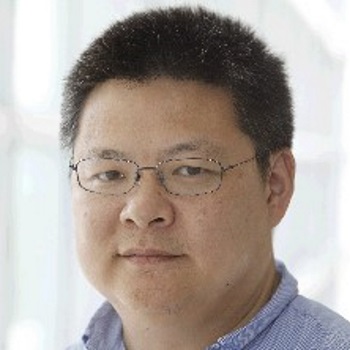
Professor Bing Xu, Brandeis University, Massachusetts, USA

Professor Bing Xu, Brandeis University, Massachusetts, USAAfter receiving his BS and MS from Nanjing University in 1987 and 1990, Bing Xu obtained his PhD in 1996 from the University of Pennsylvania. Before starting his independent research at the Hong Kong University of Science and Technology on the Aug. 2000, he was an NIH postdoctoral fellow at Harvard University. He was tenured as an associated professor in Jan 2006 and became a full professor in July 2008 at HKUST. Based on his works in HKUST and Brandeis, Bing Xu is identified on the Thomson Reuters "Highly-Cited Researchers 2014 & 2015 in Chemistry" lists. His currently is a professor in the Department of Chemistry, Brandeis University. His research focuses on the applications of molecular engineering in materials, biology, and medicine. |
|
| 12:05 - 12:45 |
SNARE mimicking peptides for membrane fusion
Membrane fusion in case of synaptic transmission is triggered by fusion proteins like SNARE (Soluble N-ethylmaleimide-Sensitive Factor Attachment Protein Receptor) proteins. A coiled-coil four-helix bundle is formed between SNARE proteins syntaxin-1A and SNAP-25 residing in the plasma membrane and the SNARE protein synaptobrevin residing in the membrane of synaptic vesicles, forcing the two merging membranes in close proximity. The precise mechanism of SNARE mediated membrane fusion, e.g. the role of transmembrane domains of synaptobrevin (Syb) and syntaxin-1A (Sx), is still under debate. Therefore, fusion experiments are described using vesicles reconstituted with artificial SNARE mimicking model systems, thereby, simplifying the SNARE assembly reaction and allowing systematic structural variations. SNARE analogous model systems based on transmembrane peptides and covalently linked recognition motifs like coiled-coil forming peptides or peptide nucleic acids (PNAs) are described. The PNA recognition motif is especially suited to control the directionality of the recognition process using caging groups thereby controlling vesicle docking and fusion. In addition, an interdependence between the recognition process and the peptide helix transmembrane domain was postulated with respect to vesicle docking and fusion efficiency. The transmembrane peptide and especially the charge of C-terminus have significant influence on the fusion mechanism. 
Professor Ulf Diederichsen, Georg-August-Universitat, Germany

Professor Ulf Diederichsen, Georg-August-Universitat, GermanyUlf Diederichsen studied Chemistry in Freiburg, Germany, with a diploma work in organic synthesis and completed his Ph.D. in 1993 under the supervision of Albert Eschenmoser at the ETH Zürich working on homo and glucose-DNA. After postdoctoral work on radical chemistry at the University of Pittsburgh with Dennis Curran, he gained his habilitation at the Technical University Munich. In 1999, he was appointed professor of Organic Chemistry at the University Würzburg, until joining 2001 the Georg-August-University Göttingen as full professor of Organic Chemistry. He was visiting professor at the LMU Munich and Goering Visiting Professor at the University of Wisconsin and is member of Göttingen Academy of Sciences and Humanities. Currently he is serving as vice president for research at the University Göttingen. His research interests focus on the modification of peptide, protein, nucleic acid, and lipid biomolecules by organic synthesis allowing for new functions, specific recognition, or molecular architecture. |
|
| 12:45 - 13:45 | Lunch |
Chair

Dr Helena Azevedo, Queen Mary University of London, UK

Dr Helena Azevedo, Queen Mary University of London, UK
Dr Helena S. Azevedo obtained a MEng degree in Biological Engineering from the University of Minho (Portugal) and her PhD from De Montfort University (UK). She completed post-doctoral work with Prof. Reis at the 3B’s Research Group at the University of Minho working on biomaterials for applications in drug delivery and tissue engineering. Before becoming an independent researcher at the University of Minho, she was a Marie Curie fellow in Chicago with Prof. Stupp at Northwestern University where she developed work on self-assembling biomaterials using peptide amphiphiles. Currently, she is a Senior Lecturer in Biomedical Engineering & Biomaterials in the School of Engineering & Materials Science at Queen Mary University of London (QMUL) and the Director of Operations of the Institute of Bioengineering also at QMUL. Her research interests include the use of peptides as instructive building blocks for constructing complexity and functionality in biomaterials.
| 13:45 - 14:10 |
Therapeutic peptides amyloid self-assembly: the concerns and the likelihoods to the pharmaceutical industry
The use of peptides as therapeutics is undergoing a renewed enthusiasm owing to a notable expansion of the number of marketing approvals in the recent years. Current successes in the development of peptides as therapeutics are likely to spur additional growth in this sector. However, clinical uses of peptide-based medicines are still challenged by short in vivo life time and low stability. Chemical modifications, such as substitutions, acylation and PEGylation, have compensated some but not all of their promises. From the development point of view, the reduced size of peptides contrasted with larger biologics upsurge to different formulation hurdles, mostly towards to chemical, conformational stability and aggregation. These unique features result in challenges of attaining satisfactory chemical and physical stability through the manufacturing process and during shelf-life. Hence, this complex feature also makes them some of the most thought-provoking molecules to design, formulate and deliver. Strategies to limit the aggregation of peptides during storage are likely to benefit from the recent surge of interest in peptide fibrillation. This talk focuses on a brief overview of formulation issues and the approaches to mitigate some development obstacles associated with peptide therapeutics self-assembly and fibrillation. The presenter also emphasizes opportunities for the thoughtful application of peptide self-assembly to develop long acting peptide drugs. 
Dr Ana Dos Santos, Medimmune Ltd, Cambridge, UK

Dr Ana Dos Santos, Medimmune Ltd, Cambridge, UKDr. Ana is a Principal Formulation Scientist at Medimmune. At her current role she is leading the formulation development of peptide lead candidates strategy at the discovery-to-development interface through IND to clinical. Ana works in multiple projects at early and late stage. Her key activities include developing formulation capabilities and strategy for peptide development such as synthetics, recombinant and semi-synthetics. Ana steered the formulation of the first synthetic peptide at Medimmune (MEDI0382) to reach the clinical trials. She earned her doctorate at the University Paris-Sud of Chatenay-Malabry (France) in Biopharmacy. She was an associate professor at the UFSC (Brazil, SC) and holds a master degree in Pharmaceutical Sciences at the Federal UFRGS (RS, Brazil). Currently, she drives several academic collaborations in the areas of peptide self-assembly, solubility, aggregation and drug delivery. Dr. Ana published widely in the area of drug delivery and nanoassembly. |
|
|---|---|---|
| 14:25 - 14:50 |
Peptide gels for slow release drug delivery and antimicrobial applications
Molecular self-association plays a pivotal role in chemical, biological and material sciences. Peptides with suitable functionalities are good candidates for assembly by using various non-covalent interactions including hydrogen bonding, pi-pi stacking, electrostatic, solvophobic and others. Under a suitable situation, a peptide can be self-assembled to form a micro/nano-fibrillar network structure occupied by a large amount of solvent molecules (water/organic solvent) and this forms a soft material called gel. It is interesting to control the assembly of designer oligopeptides to make useful gels and also to explore fascinating applications of these gels. These gels were applied to perform a variety of functions including carriers of drugs and other biologically active molecules. Recently, a peptide-based thxiotropic, proteolytically stable hydrogel has been designed and constructed and it has shown a remarkable antibacterial properties against Gram-negative bacteria. Moreover, it has shown biocompatibility with human red blood cells and human fibroblast cells. Another interesting study demonstrates peptide based soft biomaterials for anti-cancer drug release and modulation of stiffness, drug release capacity and proteolytic stability of these hydrogels by incorporating D-amino acid residue(s). 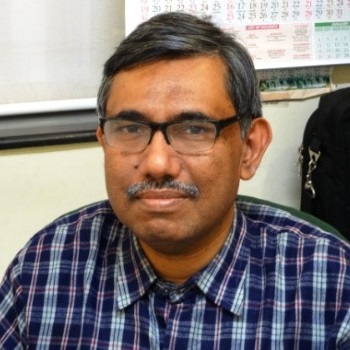
Professor Arindam Banerjee, Indian Association for the Cultivation of Science, India

Professor Arindam Banerjee, Indian Association for the Cultivation of Science, IndiaArindam Banerjee is a full professor in department of Biological Chemistry, Indian Association for the Cultivation of Science, Kolkata, India since 2009 Dec. His current research area includes self-assembly of peptides /amino acid derivatives; smart soft materials, functional gels; organic-inorganic functional nanohybrids; white-light emitting materials and fluorescent noble metal nanoclusters. He has published more than 120 research papers in various international journals. Under his supervision 16 persons have completed Ph.D. (Science). He has received several recognition/awards including Fellow Indian academy of Sciences, Bangalore (2015), Fellow of Royal Society of Chemistry (RSC), U.K. (2014), Editorial Advisory Board member in Soft Matter, A RSC journal (2014); received Thomson Reuters Research Excellence India Citation Award in 2015 , Young Career award for NanoScience and Technology by Nanomisson, DST, Govt. of India, for the year 2014. His publications have citations more than 3600 with an h-index 36. He has delivered more than 70 invited scientific lectures in various National/International Symposium/Conferences and in other occasions. |
|
| 15:05 - 15:30 | Coffee/Tea | |
| 15:30 - 16:10 |
Peptide inhibitory nanoparticles as a multivalent inhibitor of Aβ aggregation and potential treatment for Alzheimer’s disease
Aggregation of Amyloid-β peptide (Aβ) into small oligomers, and into the amyloid fibrils associated with senile plaques, is a key event in the pathogenesis of Alzheimer’s disease. The group have investigated the effects of nanoliposomes decorated with the retro-inverso peptide RI-OR2-TAT (Ac-rGffvlkGrrrrqrrkkrGy-NH2) on the aggregation and toxicity of Aβ. This retro-inverted peptide has been shown to bind to Aβ monomers and to prevent their assembly into oligomers and β-pleated sheet fibrils. Remarkably low concentrations of Peptide Inhibitory NanoParticles (PINPs) were required to inhibit the formation of Aβ oligomers and fibrils in vitro, with 50% inhibition occurring at a molar ratio of ~1:2000 of liposome-bound RI-OR2-TAT to Aβ. PINPs also bound to Aβ with high affinity (Kd = 13.2 - 50 nM), rescued SHSY-5Y cells from the toxic effects of pre-aggregated Aβ, crossed an in vitro blood-brain-barrier model (hCMEC/D3 cell monolayer), entered the brains of C57/BL6 mice, and protected against memory loss in APPSWE transgenic mice in a novel object recognition test. As the most potent Aβ aggregation inhibitor that has been tested so far, the group propose to develop PINPs as a potential disease-modifying treatment for slowing progression of Alzheimer’s disease. 
Professor David Allsop, Lancaster University, UK

Professor David Allsop, Lancaster University, UKDavid Allsop is Professor of Neuroscience at Lancaster University. He is a biochemist with a long-standing interest in the molecular neuropathology of Alzheimer’s disease and other ‘protein misfolding’ disorders, which started with his work at The Queen’s Medical Centre, Nottingham, on isolation and characterisation of amyloid plaques from post-mortem human brain. His recent work has included the development of retro-inverted peptide inhibitor nanoparticles that prevent the assembly of β-amyloid into oligomers and fibrils. These inhibitors penetrate into the brain and prevent memory loss in APP transgenic mice by reducing oligomer/amyloid plaque load. He also has an interest in molecular biomarkers for neurodegenerative diseases, and in interactions between amyloid proteins and redox-active transition metal ions. |
|
| 16:10 - 16:50 |
Kinetics of protein aggregation
This talk outlines the efforts by the group to explore the use of peptides and proteins as building blocks for the synthesis of microcapsules. The group use the self-assembly of polypeptide chains into nanofibrils to define the structure of these materials on the nanoscale, and exploit microfluidics to determine their micron scale morphology. Such capsules can be used for the stabilisation, storage and release of sensitive materials, in particular aggregation prone antibodies. Moreover, we explore the use of peptide self-assembly within microdroplets as the basis of active materials and demonstrate chemo-mechanical actuation in such systems. 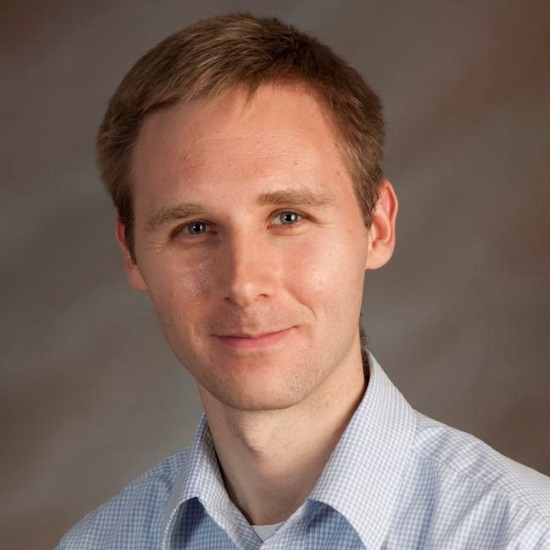
Professor Tuomas Knowles, University of Cambridge, UK

Professor Tuomas Knowles, University of Cambridge, UKTuomas Knowles studied Biology at the University of Geneva and Physics at ETH Zurich from where he graduated in 2004. He obtained a PhD in Biological Physics from the University of Cambridge in 2008 and joined the faculty at the Department of Chemistry at Cambridge in 2010 where he is currently professor of Physical Chemistry and Biophysics. His work is focused on the development and application of experimental and theoretical methods based on the physical sciences to study biomolecular behaviour and interactions in the context of both biological function and malfunction. |

